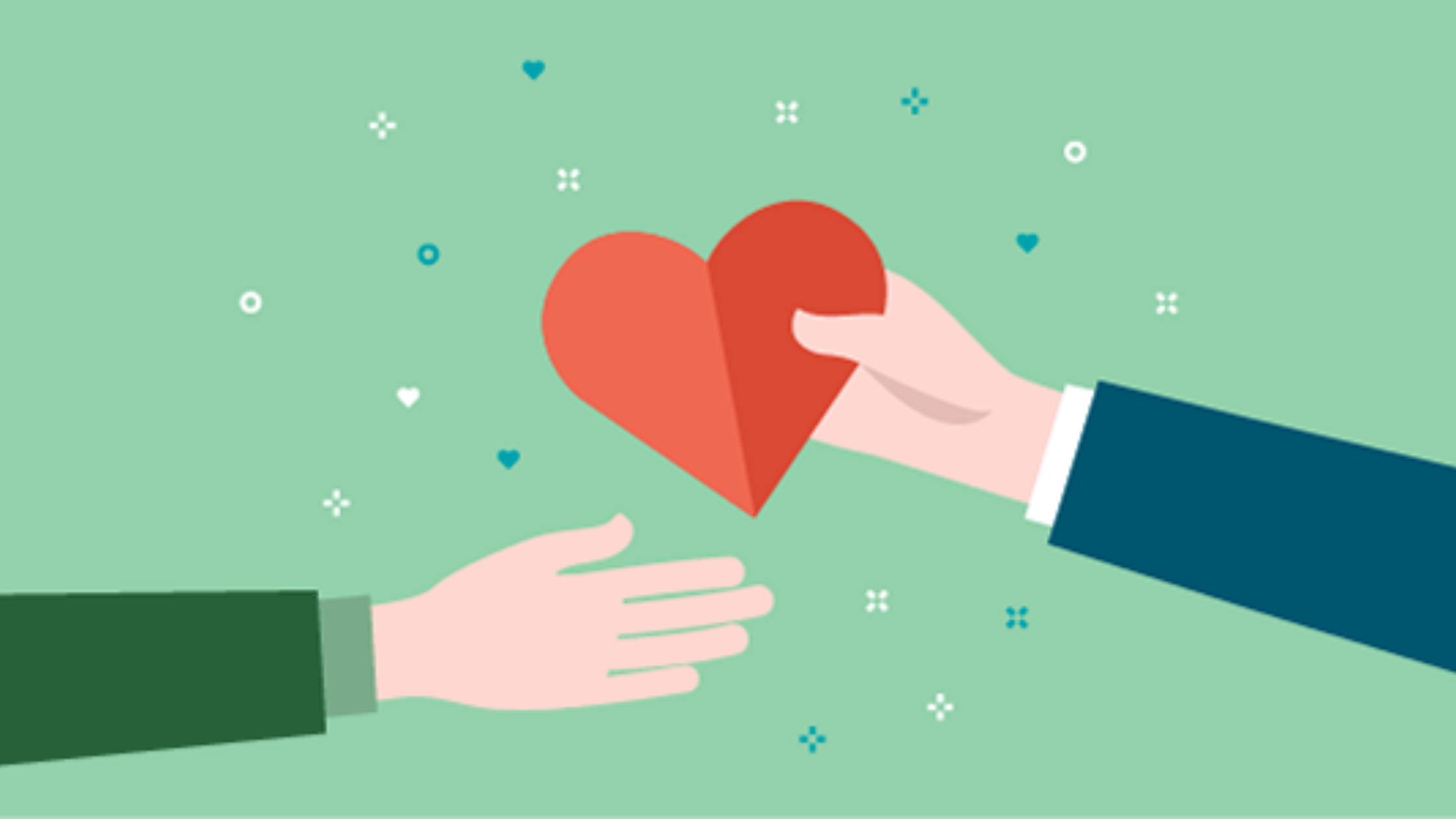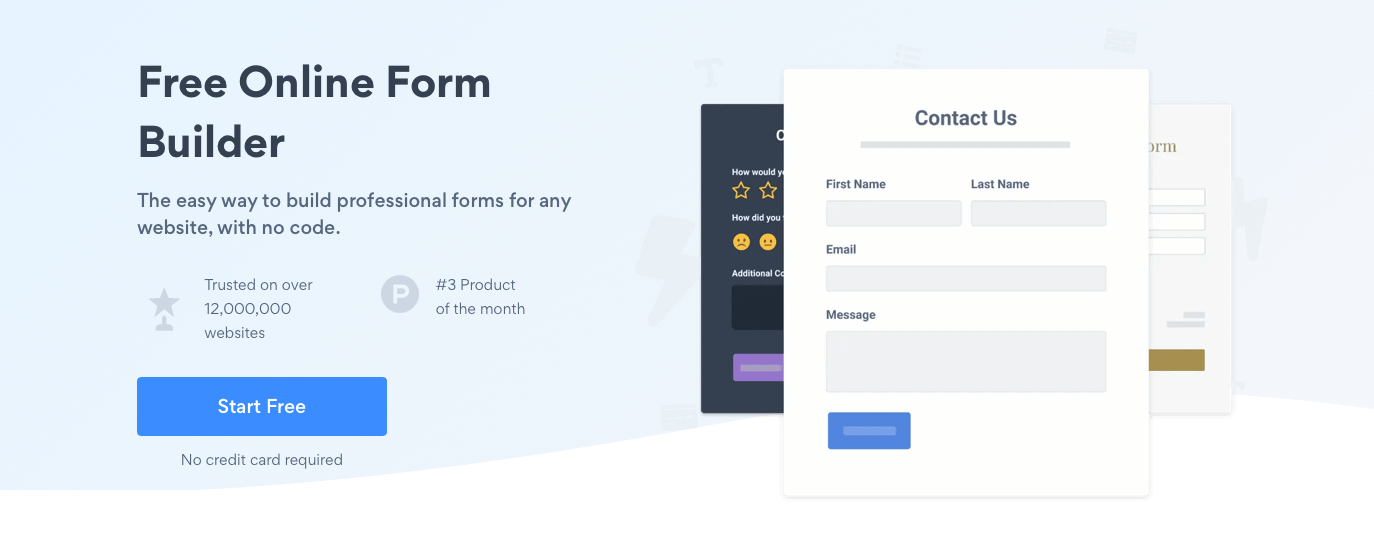It’s common knowledge among marketers and business owners that 80% of your company’s profits come from only 20% of customers. What this means is that customer loyalty goes a long way. If you can keep customers engaged with your brand, they’ll keep coming back for more or staying for the long haul.
*Updated 05/04/2025
But engaging customers enough to keep their loyalty is often easier said than done. How do you actually encourage customers to stay with your brand and improve sales?
Our recommendation is putting a customer loyalty program. Sometimes customers need the extra push to either stay subscribed or make repeat purchases.
So in this post, we want to show you a few things. First, we give you some compelling reasons why a customer loyalty program actually generates more sales for your business.
Then we talk you through the steps you need to put up your own and wrap it up with some best practices to ensure you get your customer loyalty program right the first time.
How Customer Loyalty Programs Generate Sales
As promised, let’s talk a look at why customer loyalty programs actually work to encourage more sales from existing buyers of your brand. We narrow it down to three reasons.
- Reframes existing buying behaviors
- Encourages referrals
- Provides brands with valuable user-generation content (UGC)
1. Reframes existing buying behaviors
First, customer loyalty programs help generate more sales in the long run because of how they can consciously change the existing buying habits of your customers.
Maybe a first-time buyer just bought a new pair of shoes from your online store. They’re then introduced to your customer loyalty program. Say you give a free shoe cleaner worth $15 for every new purchase to customers in the program.
So next time this customer might go shoe shopping again, they may remember the great offer you promised — all because your customer loyalty program compels them to make the most of a generous deal.
They’re more likely to want to check your online store first for any new pairs that suit their fancy, even before any other store.
And sometimes, even if they find similar pairs from other brands, because you offer something extra to make their purchase more special, the chances are higher that they check out the pair of shoes from your store over anyone else’s.
Real-world examples highlight how this plays out effectively in practice. Gidon Sadovsky, founder of Overnight Glasses, a same-day glasses delivery store, implemented a loyalty approach that rewarded repeat buyers with faster service and exclusive perks.
Similarly, tools like Eyebuydirect’s virtual try-on for glasses show how digital features can enhance convenience and keep a brand top-of-mind for customers.
2. Encourages referrals
Depending on your customer loyalty program mechanics, you might be able to turn repeat customers into brand champions.
This means customers aren’t just people who make repeat purchases; they actually encourage their peers, friends, and network to buy from your brand too.
And this could become a great cycle of getting new customers through referrals, turning those new customers into loyal fans, then making them brand champions to attract more new customers.
Many customer loyalty programs, as you’ll see in the next section when we talk about the steps you need to create one, don’t have to be complex.
They can be as simple as rewarding customers with a promo code for sharing. Or alternatively, you can give them a generous offer if they successfully refer a new sale.
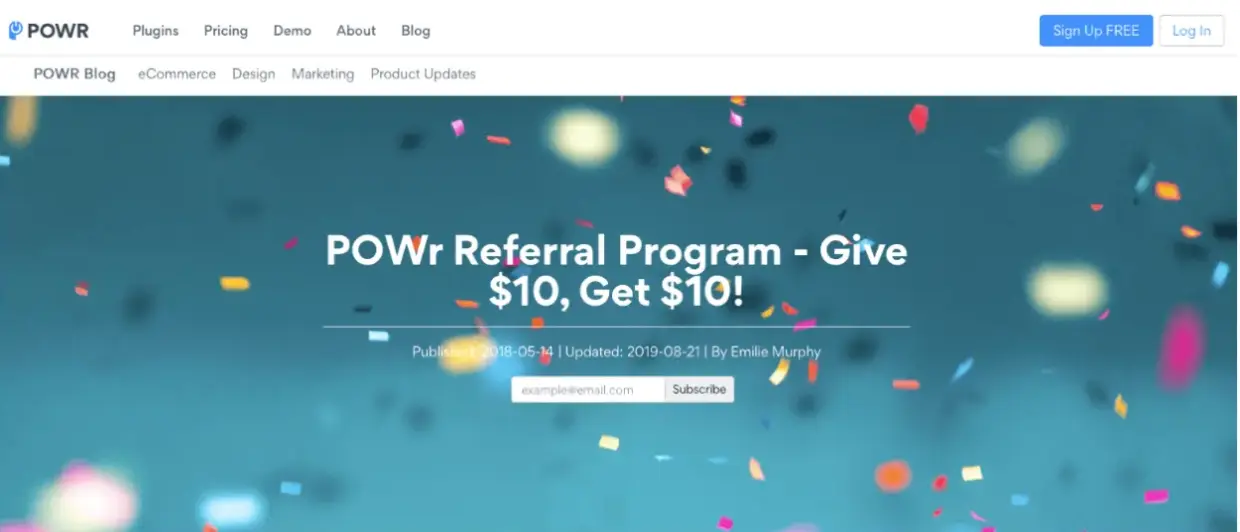
3. Provides brands with valuable user-generated content (UGC)
In customer psychology, we know that social proof and testimonials are fantastic ways to increase sales. We also mentioned before that loyal customers are more likely to become champions and referrers of your brand or service.
And one way that this can work really well is because loyal customers may talk about your brand via content they post on their personal social media accounts.
If a customer is keen on getting more rewards through your referral program, then they will take to their network with their own personal story or testimonial about your product. They may talk about their experience since buying or share their favorite things about your brand.
No matter what content they create, make the most of it. Turn these into user-generated content for posting or sharing on your own social media channels.
User-generated content can come in many forms, leveraging customers’ experiences or even creativity.
In the example above: Starbucks previously launched the White Cup challenge to encourage users to doodle on their plain white coffee cups, encouraging sales on the limited-edition white cups from loyal and creative customers.
5 Steps to Create an Effective Customer Loyalty Program
- Set a clear goal for your customer loyalty program
- Solicit feedback from existing customers
- Identify customer actions to reward
- Choose a rewards system
- Set up the redemption process
Now that you’ve seen how a customer loyalty program can truly generate more sales for your business, it’s time to see how to make one yourself.
We’ll keep it simple with these 5 steps that will help you create an effective customer loyalty program that’s designed to keep customers coming back for the long haul.
1. Set a clear goal for your customer loyalty program
Goals and metrics are a key part of any marketing campaign. Your customer loyalty program is no different.
Create a clear goal you want to achieve for your customer loyalty program. Is it to increase repeat purchases by 10%? Is it to get your first 1,000 sign-ups to the program?
The goals you set for your customer loyalty program will influence the actions you take to put up and promote the program, so get very clear on what you want to achieve through this tactic.
2. Solicit feedback from existing customers
Next, speak with your existing customers. This can be a great time to get into their heads and ask about their experience with your brand and products.
What do they like most? What do they dislike? What’s something they would love to get from your brand?
Make the most of this opportunity by also asking about their purchasing habits outside of your brand. Do they buy from your competitors? If so, what do they purchase, and how often? And why do they purchase from the brands that they do?
Take note of their answers about competitors or relevant brands. Your business can look into what the competition might be doing themselves. Do they have their own customer loyalty program? How does it work?
Any insight you can get about your customer can go a long way. Make it as easy as possible to collect data and information. Use form builders to create a customer survey for collecting mass responses or invite a few willing customers on a more detailed phone call.
Use POWR’s free online form builder to collect customer feedback faster and easier.
3. Identify customer actions to reward
Once you’ve set your goals and gotten customer insights, it’s time to flesh out your customer loyalty program.
Start by identifying some customer actions that you’ll want to reward in your program. This is where your feedback and interviews from customers can come in. How do loyal customers already interact with your brand?
For example, if you know that loyal customers purchase your physical goods at least once every quarter, you might want to set up rewards if they make a monthly purchase or reach a certain number of purchases in a quarter.
If you run a software company or sell digital services, you might want to reward customers for successfully referring new customers your way.
Here are a few other ideas for customer actions you might want to reward:
- Social sharing
- Daily or regular action in your app or software
- Completing a checklist or onboarding process
- Purchasing specific products from a particular collection
- Participating in a challenge
4. Choose a rewards system
Once you’ve identified which customer actions you want to reward, you can now move on to picking out a rewards system for them.
There are a number of ways you can reward customers for particular actions. We go through a few examples here.
-
Points system
For every specific action a customer might take, they get awarded a certain number of points. Points can then be redeemed for great prizes, like free items or big discounts.

The North Face has a simple rewards system where customers can trade in their points at their online shop or in-person stores.
-
Tier system
In a tier system, customers are challenged to unlock certain tiers that will then unlock even more rewards. To reach a tier, you might encourage customers to hit a certain threshold, either in purchases or points.
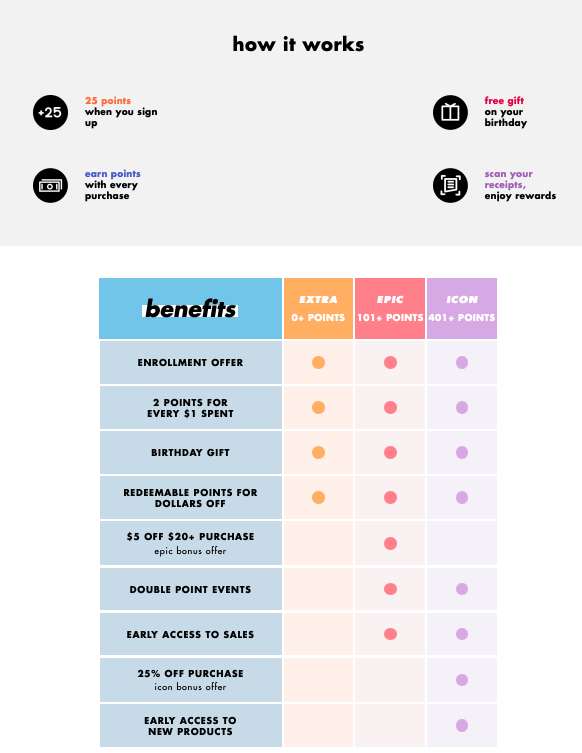
Beauty company e.l.f. rewards loyal customers with a tier system that gets better and better with every tier unlocked.
-
Cashback system
In a cashback setup, customers will get something in return by supporting your brand, particularly cashback as credit for future purchases in your store.
This means customers will have the choice of when they want to redeem their credit for future purchases and get a great discount.

The Gap has an interesting cashback program that rewards customers with their own in-store “currency” called Gap Cash, which works just like a points system but can be used as cash for future purchases.
-
Freebie system
Sometimes a customer loyalty program is simple at its core: for every purchase a customer makes, you give them a freebie they couldn’t otherwise get if they shopped for the same thing somewhere else.
This is particularly best if your company retails products from other brands or if you curate products and services in one store or marketplace.
-
Charity system
Not all customer loyalty comes from getting free gifts and perks. Some customers might be encouraged to support your company if they knew that their purchases or loyalty went to a good cause they also support.
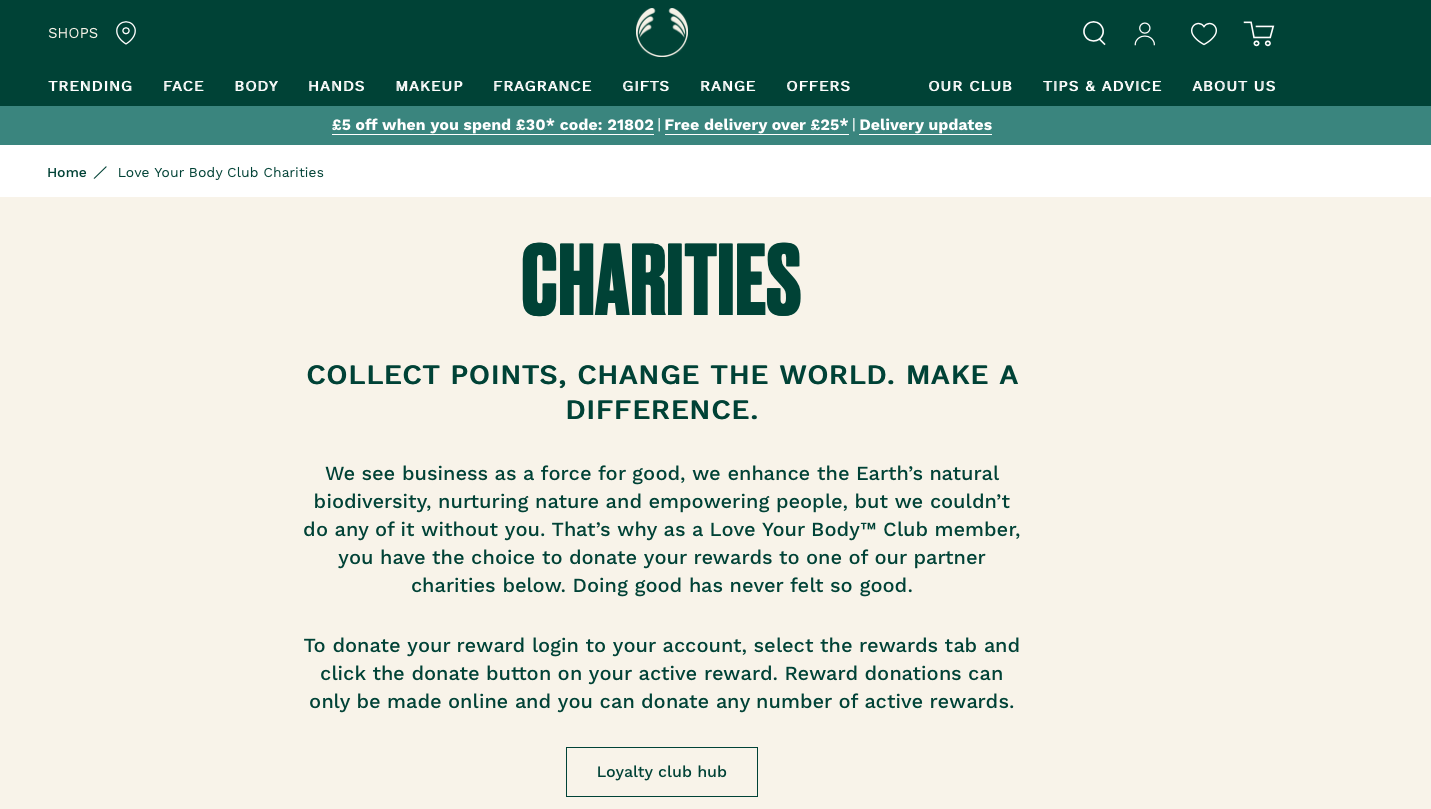
The Body Shop allows customers to use their loyalty points as a donation to any of their partner charity organizations.
5. Set up the redemption process
Finally, now that you’ve chosen your rewards system, it’s, of course, time to set up your redemption process so customers can easily redeem rewards.
For many rewards systems, things like tracking points or getting cashback are automated, then customers can simply redeem their rewards in stores.
Accounting tools can work great together with POS systems, ecommerce store payment providers, and rewards program tools to track each transaction, automatically dispense points, and track when customers redeem rewards.
You might consider adding more to your loyalty program by introducing a special page on your site or an app that helps users determine their existing points or redeemable rewards.
If you have a catalog of items that are eligible for rewards, create a separate category page when building your online store, so shoppers can easily purchase these items.
Best Practices to Observe For Your Customer Loyalty Program
- Always focus on providing value
- Double down on your customer experience
- Make your mechanics clear and easy to understand
Let’s wrap up this post with some best practices that are key to the success of your customer loyalty program, especially in the long term.
1. Always focus on providing value
Another tip to ensure the success and returns of your loyalty program is to keep giving value. A good rule of thumb to remember is the value that customers get out of your loyalty program has to outweigh the cost.
Even if customers don’t shell out anything to join your rewards program, there is still an invisible cost to them: being loyal to your brand and repurchasing. So make this experience worth it.
Value definitely pertains to the rewards themselves, but try to think outside the box. We’ll tackle this more in the next section below.
2. Double down on your customer experience
Finally, customer experience is absolutely key — not just in customer loyalty programs but especially so.
This points back to value as well. If your customers don’t feel like they’re having a great experience with your loyalty program, they’re likely not going to want to participate or keep engaging.
Can you perhaps level up your customer experience for your loyalty program? You might consider adding a help desk for customers to interact with your support team, or you can include live chat or your contact number or email.
Make it easy for customers to ask questions or reach someone from your brand if they have any queries, concerns, or complaints.
Think of ways to proactively improve customer experience instead of waiting for any issues to arise.
Can you make your redemption process even easier or better? Can you implement changes that make customers feel even more special when they shop with you?
3. Make your mechanics clear and easy to understand
Nobody likes confusing loyalty programs. The harder it is for customers to understand how and what they might get by engaging in your program, the less likely they are to want to participate.
Be sure to include how your loyalty program works. Tell customers what they need to do in order to get a particular reward, then show them how they might redeem these rewards as well.
It’s also worth mentioning that customer data is becoming a bigger concern among consumers, so don’t forget to be transparent about how your shoppers’ data in your loyalty program is being used.
Key Takeaways
Customer loyalty programs can be the one thing that turns a casual customer into a customer for life. Of course, the success of your own loyalty program depends on your planning and implementation.
Follow these tips above to make sure you put up an effective customer loyalty program that generates sales from the most engaged of consumers.
Author Bio
Kevin Payne is a content marketing consultant that helps software companies build marketing funnels and implement content marketing campaigns to increase their inbound leads.


